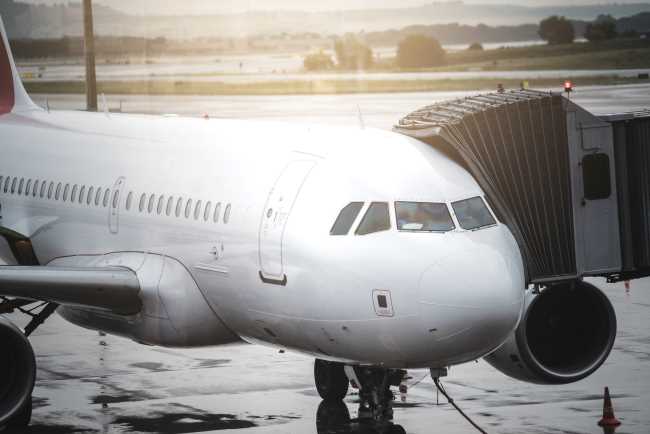Post Date: April 10, 2023
The idea of implementing digitalization in the aviation industry isn’t a new concept. Several years ago, aviation companies initiated their journey towards digital transformation. Some of these plans were disrupted due to the pandemic’s catastrophic impact on the industry.
However, despite this setback, companies are continuing with their digitalization efforts, often at an accelerated pace when compared to pre-pandemic levels. The aviation industry is experiencing a push towards digitalization, which is leading to innovative ideas and strategic planning. Companies in the aerospace sector are trying out digital twin technology, exploring ways to construct aircraft that produce no emissions, and utilizing smart manufacturing methods to assess and approve aircraft models.
The continuous digitalization in the aviation industry ensures that there will be constant improvement in the quality and design of aircrafts.
Benefits of digitalization in aviation industry
include:
Digital twins
Advanced technologies including virtual reality (VR) and industrial connectivity are employed in digital twins. The incorporation of these technologies helps to advance the digitalization efforts of aircraft manufacturers, resulting in significantly improved manufacturing operations.
A large portion of progress in this field is rooted in cloud technology, which facilitates communication within manufacturing facilities. This communication simplifies the adoption of additional intelligent technologies, such as those that gather and interpret live data.
Use real-time data
Using real-time information to guide important decisions has greatly improved the output efficiency of manufacturing companies. This data is gathered through advanced sensory technology, and it is typically evaluated by an artificial intelligence system powered by sophisticated computer algorithms. By digitizing their operations, manufacturers can acquire substantial sets of information. This information is frequently so large that it is beyond the capacity of humans to sort through.
Nevertheless, AI has the ability to evaluate all this data thoroughly and identify the most efficient modifications necessary to enhance productivity, quality, and other crucial aspects of manufacturing.
Automation
Digitalization in the aviation industry is being propelled by automation, which is an intelligent technology. Aviation companies use robots and other automated technologies to either enhance efficiency or accomplish tasks that may be too challenging or hazardous for human workers in aircraft manufacturing facilities.
Automating certain aerospace manufacturing tasks such as spot welding, handling bulky structures, and the application of fasteners and rivets through hole drilling has brought about a considerable reduction in production time while enhancing overall product quality.
Aerospace manufacturers
Aerospace manufacturers are using smart technologies to digitalize the industry quickly. Advanced manufacturing technologies were not very common ten years ago but are now being used to improve production efficiency and aircraft performance.
The aviation industry will continue to embrace digitalization as it sees the benefits of these technologies.

Challenges faced in digitalization of Aviation Industry
There are several challenges that the aviation industry faces in digitalization. One of the main challenges is the legacy systems that many aerospace manufacturers have in place. These outdated systems may not be compatible with newer technologies, making it difficult to integrate the latest digital tools and platforms.
Additionally, cybersecurity threats remain a significant concern for aerospace manufacturers, especially those working with sensitive data and classified information. The sheer volume of data generated by digitalization efforts can also be overwhelming, requiring advanced analytics tools to effectively analyze and utilize the information. The use of various technological advancements for the digital transformation of aircraft production has created a requirement for ensuring cybersecurity in the aviation sector.
Cybersecurity is important for aerospace manufacturers who work with the country’s defense companies. It helps protect technologies from bad actors trying to harm companies. Airplane manufacturing facilities have implemented various safeguards to ensure security such as monitoring the network, installing antivirus software, and using device protection measures. These measures are necessary to prevent unwanted access to important data and connected machinery.
Finally, there is a need for skilled labor to effectively design, implement, and manage digitalization efforts within the industry, which can be challenging to find and retain.
Conclusion: Future Of Digitalization in Aviation Industry
The aviation industry has been on a digital transformation journey for years, but the pandemic has accelerated digitalization efforts. Real-time data collection and analysis have allowed aerospace manufacturers to implement predictive and corrective maintenance processes, which has led to cost and time savings. Digital twins, which are virtual models that can mirror manufacturing processes and end products, are being used to simulate different parts of aircrafts and make virtual changes to components to see how they affect performance.
Smart manufacturing technologies such as automation, robotics, and AI are being used to significantly enhance manufacturing operations, improve production efficiency, and enhance aircraft performance. The benefits of these technologies will continue to drive digitalization in the aviation industry.




